 W
WSturnira is a genus of bat in the family Phyllostomidae. The genus name comes from the Latin for "starling" and refers to HMS Starling, which took part in an 1836 voyage to Brazil during which the type specimen was collected. It contains the following species:Angel's yellow-shouldered bat, Sturnira angeli Aratathomas's yellow-shouldered bat, Sturnira aratathomasi Baker's yellow-shouldered bat, Sturnira bakeri Bidentate yellow-shouldered bat, Sturnira bidens Bogotá yellow-shouldered bat, Sturnira bogotensis Burton's yellow-shouldered bat, Sturnira burtonlimi Hairy yellow-shouldered bat, Sturnira erythromos Gianna's yellow-shouldered bat, Sturnira giannae Choco yellow-shouldered bat, Sturnira hondurensis Sturnira koopmanhilli Little yellow-shouldered bat, Sturnira lilium Highland yellow-shouldered bat, Sturnira ludovici Louis's yellow-shouldered bat, Sturnira luisi Greater yellow-shouldered bat, Sturnira magna Mistratoan yellow-shouldered bat, Sturnira mistratensis Talamancan yellow-shouldered bat, Sturnira mordax Lesser yellow-shouldered bat, Sturnira nana Tschudi's yellow-shouldered bat, Sturnira oporaphilum Northern yellow-shouldered bat, Sturnira parvidens Paulson's yellow-shouldered bat, Sturnira paulsoni La Perla yellow-shouldered bat, Sturnira perla Soriano's yellow-shouldered bat, Sturnira sorianoi Thomas's yellow-shouldered bat, Sturnira thomasi Tilda's yellow-shouldered bat, Sturnira tildae
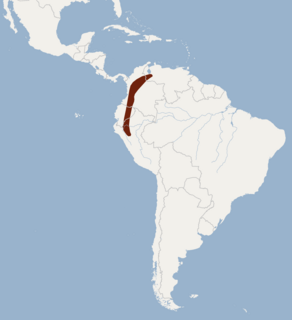 W
WAratathomas's yellow-shouldered bat is a species of bat in the family Phyllostomidae. It is found in Colombia, Ecuador, Peru, and Venezuela.
 W
WTilda's yellow-shouldered bat is a bat species from South America. It is found in Bolivia, Brazil, Colombia, Ecuador, French Guiana, Guyana, Peru, Suriname, Venezuela, and Trinidad and Tobago.
 W
WThe bidentate yellow-shouldered bat is a species of bat in the family Phyllostomidae. It is found in Colombia, Ecuador, Peru, and Venezuela.
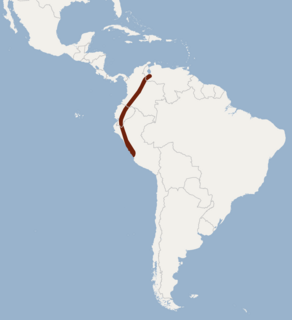 W
WThe Bogotá yellow-shouldered bat is a species of bat in the family Phyllostomidae. It is found in Colombia, Ecuador, Peru, and Venezuela at altitudes from 300 m to above 2000 m, particularly in cloud forest. The species is primarily frugivorous; it may also consume nectar and pollen.
 W
WThe greater yellow-shouldered bat is a species of bat in the family Phyllostomidae. It is found in Bolivia, Colombia, Ecuador, and Peru.
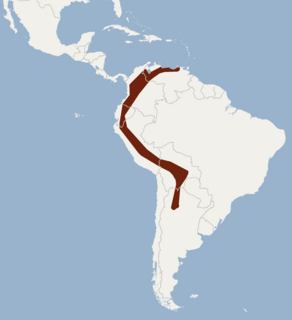 W
WThe hairy yellow-shouldered bat is a species of bat in the family Phyllostomidae native to South America. There are no recognised subspecies.
 W
WThe highland yellow-shouldered bat is a species of bat in the family Phyllostomidae. It is found in Colombia, Costa Rica, Ecuador, El Salvador, Guatemala, Guyana, Honduras, Mexico, Nicaragua, Panama, and Venezuela.
 W
WThe lesser yellow-shouldered bat is a species of bat in the family Phyllostomidae. It is native to Peru and Ecuador. It is threatened by habitat loss.
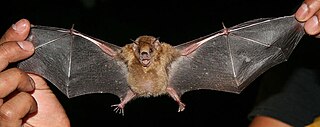 W
WThe little yellow-shouldered bat is a bat species from South and Central America. This species is a frugivore and an effective seed disperser. It roosts alone in tree cavities, on branches, vines, and under palm leaves, usually keeping to the same roosts day to day. There is evidence to suggest hypothermia is a thermoregulatory strategy to help adjust metabolic levels. In terms of mating, ambient temperature has been noted as a greater influence as compared to food availability. Its wing shape can also be affected by pregnancy in order to make flight more efficient.
 W
WLouis's yellow-shouldered bat is a species of bat in the family Phyllostomidae. It is found in Colombia, Costa Rica, Ecuador, Panama, and Peru.
 W
WThe Mistratoan yellow-shouldered bat, is a species of leaf-nosed bat indigenous to the Cordillera Occidental, in the Mistrato municipality in Risaralda, Colombia. Since existing information derives exclusively from the holotype, the status of the species, its environmental requirements, and the trend of the population are unknown.
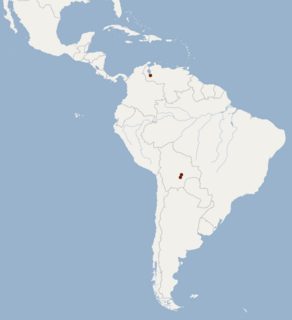 W
WSoriano's yellow-shouldered bat, is an extant species of leaf-nosed bat indigenous to Bolivia and Venezuela, although its precise distribution is uncertain. Following the postulation of the species in 2005, S. sorianoi requires contemporary information relating its distribution, environment, and population, along with formal a comparison with S. erythromos and S. bogotensis. Without sufficient data, the International Union for Conservation of Nature (IUCN) presently considers the taxonomy for S. sorianoi as incomplete.
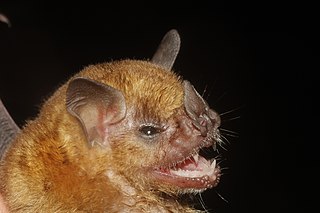 W
WSturnira honurensis is a species of bat found in Central America. Previously, it was considered a subspecies of the highland yellow-shouldered bat, but it has been considered distinct since 2010.
 W
WSturnira koopmanhilli is a species of leaf-nosed bat found in South America.
 W
WSturnira parvidens is a species of leaf-nosed bat found in Central America.
 W
WThe Talamancan yellow-shouldered bat is a species of bat in the family Phyllostomidae. It is found only in Costa Rica and Panama, and there are no subspecies.
 W
WTschudi's yellow-shouldered bat is a species of leaf-nosed bat indigenous to Argentina, Ecuador, and Peru, with its range also encompassing Bolivia.